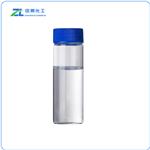Uses
4,4'-Methylenebis(cyclohexylamine) is a potential high inhibitive and high temperature resistant shale inhibitor.
Description
4,4'-Diaminodicyclohexyl methane is a sodium salt of a cyclic anhydride that is used as a specific treatment for removing dodecanedioic acid from fatty acids. The reaction solution is stable at pH 4-5 and has a viscosity of less than 1000 cps. It has good stability in the presence of amines and can be used in chromatographic science, including chromatography and gas-liquid chromatography. The UV absorption maxima for the acid complex are 195 nm and 240 nm.
Chemical Properties
Beige solidified mass or fragments
Uses
4,4'-Diaminodicyclohexylmethane is used as epoxy curing agents. It is a versatile intermediate to produce leather, rubber products, plastics, dyes, and photo sensitive polymers. It is used in manufacturing diisocyanates and polyamides. It is also used as lubricant additive as and corrosion inhibitor.
Uses
4,4'-Diaminodicyclohexyl methane be used as organic intermediates and epoxy curing agents.
Synthesis Reference(s)
Journal of the American Chemical Society, 75, p. 1156, 1953
DOI: 10.1021/ja01101a044
General Description
Yellowish white liquid or brown solid paste.
Air & Water Reactions
Sensitive to decomposition in air and light . Insoluble in water.
Reactivity Profile
4,4'-Diaminodicyclohexyl methane neutralizes acids in weakly exothermic reactions to form salts plus water. May be incompatible with isocyanates, halogenated organics, peroxides, phenols (acidic), epoxides, anhydrides, and acid halides. May generate hydrogen, a flammable gas, in combination with strong reducing agents such as hydrides.
Health Hazard
ACUTE/CHRONIC HAZARDS: 4,4'-Diaminodicyclohexyl methane is corrosive.
Fire Hazard
4,4'-Diaminodicyclohexyl methane is probably combustible.
Flammability and Explosibility
Non flammable
Toxicology
On resorption, predominant clinical signs of intoxication were hyperexcitability, excessive salivation, and convulsions in animals; repeated oral dosing (50 – 100 mg kg -1 d -1 in rats and mice for 10 and 16 d, respectively, 50 mg/kg in dogs for up to 82 weeks) resulted in gastrointestinal hemorrhagic inflammations, nephritis, and fatty changes to the liver. No changes in methemoglobin or in other hematological parameters were induced in cats on repeated doses of 50 and 100 mg kg -1 d -1, given twice per week over 2 months. Several in vitro and in vivo mutagenicity studies gave no evidence of a mutagenic or clastogenic potential.
Toxics Screening Level
The initial threshold screening level (ITSL) for 4,4'-diaminodicyclohexylmethane is 6 μg/m3 based on an annual averaging time.








